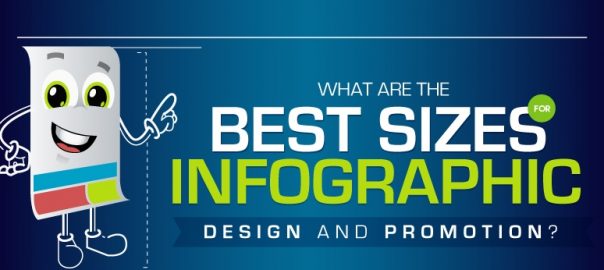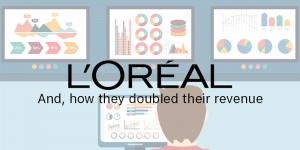— September 22, 2017
Infographics are still one of the most effective ways to not only create content on the internet today but also to get more attention, exposure and social shares in the process. When you look at industry stats on visual content and online video, it’s clear that text content is taking a back seat to anything visual. For site owners and content creators, this is a great opportunity to turn their existing text content into powerful infographics that can reach a whole new audience while also bringing new life and focus back to some of their best performing content.
With mobile and responsive viewing now more important than ever, it’s crucial to have visual content that is properly designed and in the right file formats and sizes. Here are some things to consider before going live with your next infographic design.
- What size should you make for your infographics?
- Are there general specifications for the size of infographics?
- Does size of infographics vary from platform to platform?
To help with this process, be sure to check out the infographic below that provides answers to all your queries regarding infographic size and specifications. Special thanks to Infographic Design Team for the creation of the infographic.
Best Sizes and Tech Specs for Infographic Design
- For a blog or a general website, you should create an infographic that is not more than 600 pixels, and the length should not exceed 1800 pixels.
- Visually allows you to post infographics of 1240 x 1750 pixels.
- Pinterest allows you to use a size of 600 x infinite pixels. On Pinterest, you can make it as long as you want to!
- Facebook allows you to post an infographic with a minimum size of 403 x 403 pixels, and a maximum of up to 2048 pixels by 2048 pixels.
- Google Plus allows you to offer an infographic at a size of 497 x 373 pixels, up to 2048 x 2048 pixels.
- In general, you should create infographics that you want to be viewable by tablet owners by 600-640 pixels.
Three more infographic design tips provided by CopyBlogger and Blogging.org, are to implement the following within each design:
- Focus on a simple concept
- Make your infographic shareable
- Use a color scheme that matches your brand
While some of these points might seem obvious, you would be surprised at how many unprofessional infographic designs are floating around the internet.
Once you’ve created an infographic, then the real fun and promotion come into play. In addition to placing the infographic of your website or blog, don’t forget to add an embed code so other site owners can share it with their audiences as well. You will also want to make sure you have easy social sharing buttons on your page as well. Since visuals are often shared a lot more than regular text content, then easier you make this process for your audience, the more likely they are to take action.
![What Are the Best Sizes for Infographic Designs? [Infographic] What Are the Best Sizes for Infographic Designs? [Infographic]](https://www.onlinesalesguidetip.com/wp-content/uploads/2017/09/What-Are-the-Best-Sizes-for-Infographic-Designs-Infographic.jpg)
Digital & Social Articles on Business 2 Community
(103)









